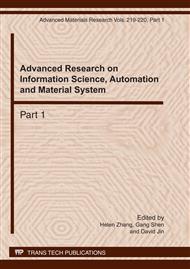[1]
Tanksley S.D.,and S.R.McCouch. Seedbanks and molecular maps:Unlocking genetic potential from the wild.Science. McCouch. 1063–1066 (1997) , p.277.
DOI: 10.1126/science.277.5329.1063
Google Scholar
[2]
Tollenaar,M. Genetic improvement in grain yield of commercial maize hybrids grown in Ontario. Sci.29 (2009) ,p.1365–1371.
DOI: 10.2135/cropsci1989.0011183x002900060007x
Google Scholar
[3]
Tollenaar,M.,A.Aguilera,and S.P. Nissanka.Grain yield is reduced more by weed interference in an old than in a new maize hybrid.Agron.J. (2007) , p.89:239–246.
DOI: 10.2134/agronj1997.00021962008900020014x
Google Scholar
[4]
G. Henkelman, G.Johannesson and H. Jónsson, in: Theoretical Methods in Condencsed Phase Chemistry, edited by S.D. Schwartz, volume 5 of Progress in Theoretical Chemistry and Physics, chapter, 10, Kluwer Academic Publishers (2010).
Google Scholar
[5]
Villareal R.L.,O.Ban.uelos,J.Borja,R.Delgado,A.Mujeeb-Kazi,and S. Rajaram. Agronomic performance of some advanced derivatives of synthetic hexaploids(T.turgidum 3 T.tauschii). 3 (2007) , p.175–177.
Google Scholar
[6]
P.G. Clem, M. Rodriguez, J.A. Voigt and C.S. Ashley, U.S. Patent 6,231,666. (2001).
Google Scholar
[7]
Information on http://www.weld.labs.gov.cn.
Google Scholar
[8]
Watanabe,N.,J.R. Evans,and W.S. Chow.Changes in the photosynthetic properties of Australian wheat cultivars over the last century.Aust.J.Plant Physiol.21: (2009) ,p.169–183.
DOI: 10.1071/pp9940169
Google Scholar
[9]
Wells,R.,L.L. Schulze D.A. Ashley H.R. Boerma,and R.H. Brown.1982.Cultivar differences in canopy apparent photosynthesis and their relationship to seed yield in soybeans.Crop Sci.22(2006) , p.270.
DOI: 10.2135/cropsci1982.0011183x002200040044x
Google Scholar
[10]
Wells,R.,L.L. Schulze D.A. Ashley H.R. Boerma,and R.H. Brown. Cultivar differences in canopy apparent photosynthesis and their relationship to seed yield in soybeans.Crop Sci.(2008) ,344.
DOI: 10.2135/cropsci1982.0011183x002200040044x
Google Scholar
[11]
Worland A.J.1996.The influence of flowering time genes on environmental adaptability in European wheats.Euphytica 89:49–57.
DOI: 10.1007/bf00015718
Google Scholar
[12]
Worland A.J.and Sayers E.J. Rht 1(B.dw),an alternative allelic variant for breeding semi-dwarf wheat varieties.Plant Breeding 114(2008) , pp.397-400.
DOI: 10.1111/j.1439-0523.1995.tb00819.x
Google Scholar


